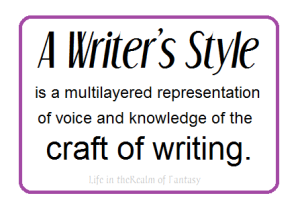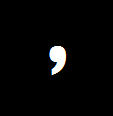 I receive a lot of unsolicited manuscripts, by new authors looking for an editor. Most of them are from authors who just completed NaNoWriMo. They’re just learning the ropes and don’t realize their work is still in the unreadable stage. I always explain to them why these manuscripts are not submission ready, much less ready for an editor to have a look at.
I receive a lot of unsolicited manuscripts, by new authors looking for an editor. Most of them are from authors who just completed NaNoWriMo. They’re just learning the ropes and don’t realize their work is still in the unreadable stage. I always explain to them why these manuscripts are not submission ready, much less ready for an editor to have a look at.
What many first-time authors lack is knowledge, so I direct them to workshops, seminars, and writing groups.
This is where the work comes into it. We must learn and use the basic writing conventions that underpin how all English literature is written. These conventions consist of:
- Spelling
- Punctuation
- Capitalization
- Grammar
These are the fundamental rules authors follow so their work is understandable by any person who can read English, no matter if they are from Sacramento, London, Sydney, or Mumbai.
Kathleen Cali, in an article at Learn NC, says: “Conventions are the surface features of writing — mechanics, usage, and sentence formation. Conventions are a courtesy to the reader, making writing easier to read by putting it in a form that the reader expects and is comfortable with.”
When we write, whether we are writing a book, an essay, or an email, we are writing something we want the intended reader to comprehend. Therefore, we write using universally accepted rules for sentence construction.
So what makes an understandable sentence? It will consist of
- a subject (My dog)
- a verb (barked)
- some words to help explain those two things (all night long.)
- My dog barked all night long.
Sentences consist of clauses. Commas are the universally acknowledged pausing and joining symbol. Periods (or full stops) are how we signify the end of a sentence. Without these pausing and stopping symbols, our words become a jumble and make no sense. You might think this is a “Well, Duh!” moment, but when a person is in the throes of laying down the first draft they begin to write in a kind of mental shorthand, and sometimes these fundamentals fall by the way. This is why we do a second draft before we have anyone look at it.
Readers expect to find a pause between two clauses and commas are sometimes the signifiers of those pauses. Words that are conjunctions (such as and, or, but) also serve to join clauses to form compound sentences.
According to About Education: A clause may be either a sentence (an independent clause) or a sentence-like construction within another sentence (a dependent or subordinate clause).
Subordinate Clause definition: A group of words that has both a subject and a verb but (unlike an independent clause) cannot stand alone as a sentence. Also known as a dependent clause. Contrast with coordinate clause.
Example:
If a free society cannot help the many who are poor, it cannot save the few who are rich.”
(John F. Kennedy)
Mostly I find subordinate clauses cropping up in conversation–dialogue–when I look at my own writing. These “grammatical juniors” are like any other form of seasoning in our writing and must be used consciously and sparingly. When we write with too many subordinate clauses, we separate the reader from the narrative.
We provide balance in how we phrase our sentences, using a variety of sentence structures. We use complex sentences, consisting of:
- a simple clause
I went to the grocery store. (the meat of the matter)
- a dependent clause
because I needed skewers. (technically not necessary but adds to it)
- I went to the grocery store because I needed skewers.
Who was I going to skewer? I don’t know, but I at least I had the right tool for the job.
We can set the clause off with commas:
The lake, its surface calm and black, called to me.
The lake called to me is the meat of this sentence, the clause describing it is technically not necessary, but without that clause the sentence is flat.
Sometimes, we want to use sentence fragments in our narrative. When they are written well and interspersed correctly, using sentence fragments emphasizes certain passages, creates a desired atmosphere, and can make conversations sound more natural.
A sentence expresses a complete thought. Also, every sentence, no matter how short, contains a subject—or an implied subject—and a verb. Linda Neuman of Sophia.org says:
So a sentence fragment would be a piece of a sentence. It’s not a sentence because it’s incomplete, and does not contain both a subject and a verb. Sometimes sentence fragments are referred to as incomplete sentences. There is something missing, and you know it when you read it. The thought is not complete, like a sentence would be.
Example of a sentence: Her car was old, but very stylish.
Example of a sentence fragment: Her car was old. But very stylish.
The internet is full of good information about sentence construction and how to write a narrative that any reader of English, no matter what their nationality, will be able to understand. You can access a great deal of information on how to construct a readable narrative and it will cost you nothing.
 The Chicago Manual of Style is a volume that defines the rules of the road for US English Grammar. I consider it an indispensable guide for serious authors. This particular book is the reference manual used by the US publishing industry and is the foundation book for my personal reference library. It is one of the oldest and most comprehensive style guides available, and for me in my role as an editor, it’s an indispensable tool because it contains information that I can’t find anywhere else. While I could easily access it all via the online version, I do like having my large book at my fingertips.
The Chicago Manual of Style is a volume that defines the rules of the road for US English Grammar. I consider it an indispensable guide for serious authors. This particular book is the reference manual used by the US publishing industry and is the foundation book for my personal reference library. It is one of the oldest and most comprehensive style guides available, and for me in my role as an editor, it’s an indispensable tool because it contains information that I can’t find anywhere else. While I could easily access it all via the online version, I do like having my large book at my fingertips.
Quoted and Researched Sources:
AboutEducation.com: Clause (Grammar) by Richard Nordquist, accessed Dec. 11, 2016
GrammarRevolution.com: What are Clauses by Elizabeth O’Brien, accessed Dec. 11, 2016
LearnNC.com: The five features of effective writing, by Kathleen Cali and Kim Bowen, accessed Dec. 11, 2016
Sophia.org: Using Sentence Fragments Wisely, by Linda Neuman, accessed Dec. 11, 2016








Reblogged this on Chris The Story Reading Ape's Blog.
LikeLike
Thank you for the reblog, Chris!
LikeLiked by 1 person
Welcome Connie 😀
LikeLike
Reblogged this on Wild and Woolly Wordsmithing and commented:
Awesome post about the fundamentals of writing. Must reblogged! Thank you for setting it out so clearly!
LikeLike
Thank you for the reblog, and for stopping by!
LikeLiked by 1 person
This is one of the most concise and helpful essays about grammar use that I’ve ever come across. Thank you.
I never begin a narrative sentence with a dependent clause in my fiction writing because I found that it interrupts the natural time flow of the story.
LikeLike
I’m glad you stopped by! Start a sentence with a dependent clause we should not! Seriously, you would die laughing if you saw what falls out of my keyboard in my rough drafts.
LikeLiked by 1 person
My rough drafts are heavy on the sentence fragments, like random ideas that need cohesion.
LikeLiked by 1 person
Wonderful “short course” in the basics. TY for” taking up the cause” and cautioning new writers that more than content counts. As my Freshman Comp professor told me many,many years ago: There is no beauty without form.
LikeLike
Rae – Nice to meet you! So many people want to write, but life may have gotten in the way of their formal education.
LikeLiked by 1 person
Formal education (and I say this as a university professor) is not for everyone; and that said, life experience (been there done that; this worked, that didn’t) is the best education of all. We all attend the University of Life (or as my grandmaother called it “The School of Hard Knocks.” Posts like yours help these well-educated-in-other-ways people find a voice and write to express themselves.
LikeLiked by 1 person